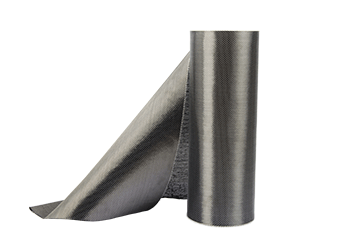Solutions
Horse Construction offers full range of structural strengthening materials with technical supports, documentation supports, products supports, project supports.
Carbon fiber fabric is widely used and has a far-reaching impact on structural safety. In order to ensure structural safety, it is necessary to select high-quality carbon fiber cloth to avoid safety risks when choosing carbon fiber cloth.
With the increasing number of existing buildings, structural reinforcement has become an indispensable part of the construction industry. Structural reinforcement is indispensable for improving the bearing capacity of structures due to functional changes or for seismic reinforcement.
The reinforcement materials used in structural reinforcement directly affect the quality of reinforcement from the source. The poor reinforcement materials will reduce the reinforcement effect, even lead to the failure of reinforcement and affect the safety performance of the structure.
Among many reinforcement methods, CFRP reinforcement has been gradually recognized by more and more people because of its advantages of simple construction, flexible operation and obvious increase of bearing capacity. So far, it has become one of the most commonly used reinforcement methods.
Carbon fiber cloth is widely used and has a far-reaching impact on structural safety. In order to ensure structural safety, it is necessary to select high-quality carbon fiber cloth to avoid safety risks when choosing carbon fiber cloth.
So in the selection of carbon fiber fabric, how to distinguish the pros and cons?

Raw material
Carbon fiber cloth is made of carbon fiber precursor, and the quality of carbon fiber precursor has a fundamental impact on the performance of carbon fiber cloth. From the point of view of tow, the allowable carbon fiber precursors in carbon fiber cloth can be divided into small tow fibers below 12K or 12K. This is because the large tow fibers will lead to difficulties in impregnation of impregnating adhesives and affect the mechanical and technological properties of carbon fiber cloth.
Apart from the difference between small tows and large tows, carbon fiber precursors, like carbon cloth, have different strength categories. According to the investigation, the precursors of carbon fiber cloth are basically T300 and T700, and their strength are 3530 MPa and 4900 MPa, respectively. The strength requirement of high strength grade I carbon cloth in the specification is 3400 MPa. It seems that the strength of T300 can meet the requirement of high strength grade I, but this is not the case.
Regardless of the braiding process or the reason of precursor content, the strength of carbon fibre precursor will decrease obviously after braiding into carbon fibre cloth. We adhere to the use of T700 carbon fiber precursor, and through continuous technological improvement and innovation, the strength of carbon fiber cloth will be increased to 4000-5000MPa. Considering the strength requirement and safety reserve, the carbon cloth woven from T700 precursor is undoubtedly a better guarantee.

Weave
Braiding technology is also an important factor affecting the properties of carbon fiber cloth. The weaving process is related to the machine used for weaving, but on the premise of a good machine, attention should also be paid to whether each precursor is straight in the process of weaving. The looseness of precursor will cause wrinkles on the surface of carbon cloth, resulting in empty drums and potential safety hazards in the later construction process.
You can find anything here you are in need of, have a trust trying on these products, you will find the big difference after that.

High strength, unidirectional carbon fiber wrap pre-saturated to form a carbon fiber reinforced polymer (CFRP) wrap used to strengthen structural concrete elements.

High strength, unidirectional carbon fiber fabric pre-saturated to form a carbon fiber reinforced polymer (CFRP) fabric used to strengthen structural concrete elements.

High strength, unidirectional carbon fiber sheet pre-saturated to form a carbon fiber reinforced polymer (CFRP) sheet used to strengthen structural concrete elements.